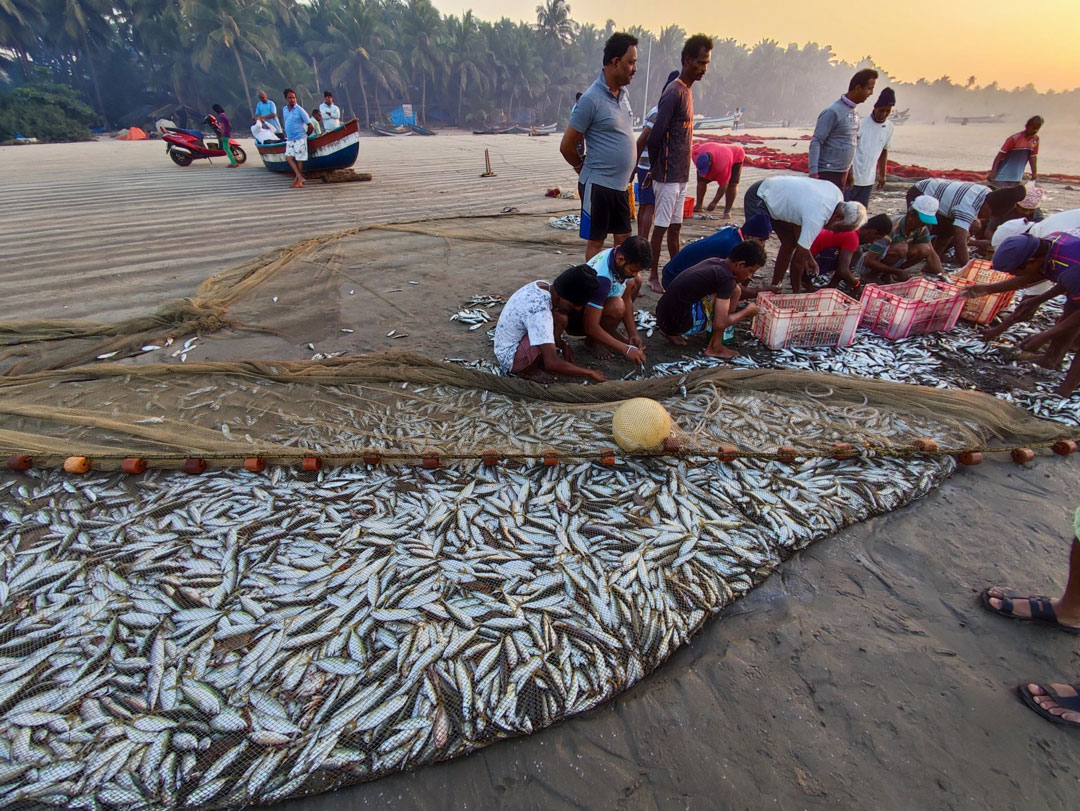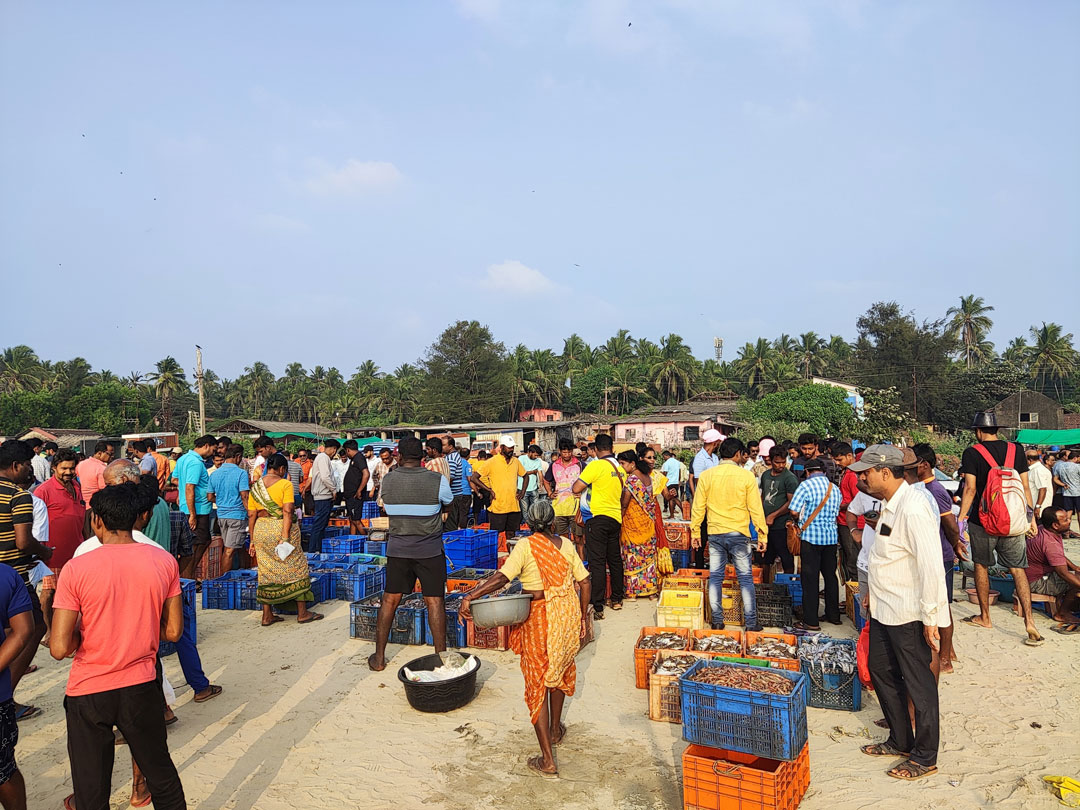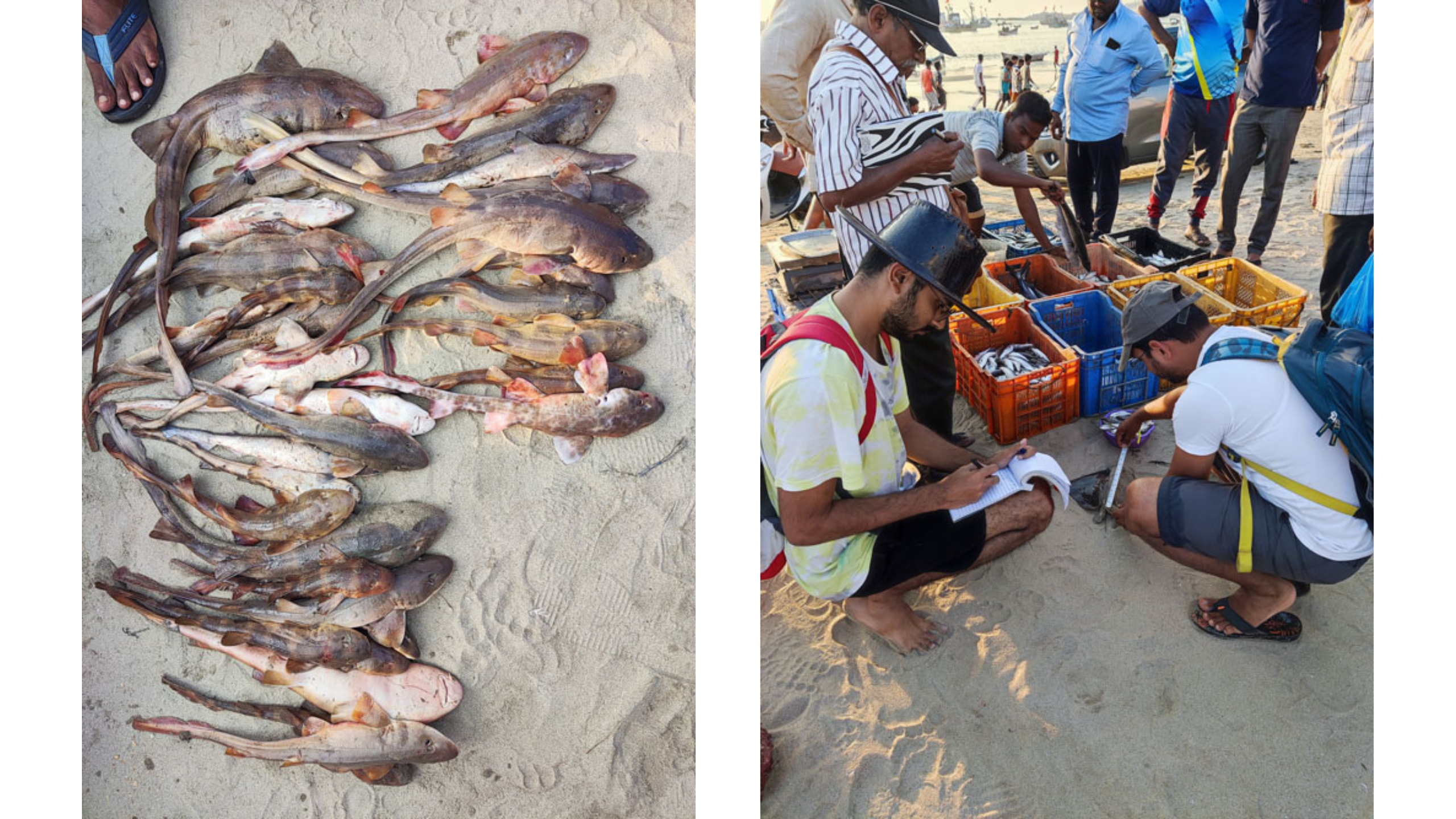(Partially) becoming a fisher for research
The most striking feature of any fish-landing centre in India is the quantity and diversity of catch that one can observe. Creatures in blue, yellow and green, shaped round, flat or cylindrical, with size anywhere between the length of a finger to a mini-bus, filling hundreds of crates of equally vivid colours. So, it was only natural for me to doubt my friend when I first visited Malvan in February 2022, who claimed that all fish we saw in the market that evening were caught on the same day. And further, there would be equal, if not more, fish to be seen during any revisit.

A shore-seine net or a rapan is used to scoop small fish like sardines out from up to 500 metres from the shore and can extend to more than a kilometre in length. Photo © Imran Samad
The life history, or how animals live their lives in the ocean, can vary considerably across species. Small fish and crustaceans, for example, usually have short life spans, reproduce quickly, and produce offspring in huge quantities. Therefore, finding tonnes of catch of species like Indian mackerels, sardines, crabs, shrimps, etc., may not be a surprise. However, larger, slow-growing species that generally produce only a few offspring in a year should be less common in the market. Most of such animals, including sharks, rays, guitarfish, etc., seen in the market were perhaps less than a year old. Yet, their numbers far exceeded my expectations. How are there so many sharks in the market every day? How long before they are no more? How do we protect these threatened species that are important actors in the marine ecosystem? Questions like these flooded my thoughts, but the one that persisted was, ‘Where are all these sharks and rays coming from?’

The fish market is quickly assembled as boats land their catch to shore and attracts buyers from hundreds of kilometres away. Photo © Imran Samad
My team and I have been working in the small town of Malvan, on the west coast of India, for the past few months to answer this question, the first step of which is to learn to live like a local fisher. A typical day requires us to be at the fish-landing centre cum market before sunrise and near sunset when most vessels land their catch. In a matter of minutes, the quiet of dawn is taken over by the chaos of the market, where buyers come from faraway towns to buy fresh fish. Our team of 2-3 members must act swiftly to write down what incoming boats have caught and interview the crew for fishing locations. Some days we accomplish this with ease. On other days, we are still caught in frenzied auctions in the market, helped by some fisher friends. Both days, nonetheless, are equally exciting and insightful. By collating this information, we hope to engage with the local community on conservation topics and perhaps develop plans for the same.

Left: Bamboo sharks caught by one trawling vessel in a day. Right: Recording catch data amidst the hustle of the market requires consent and working closely with the locals. The Principal Investigator (Imran Samad) measures an eagle ray with this field assistant (Harshal Patil). Photos © Imran Samad
